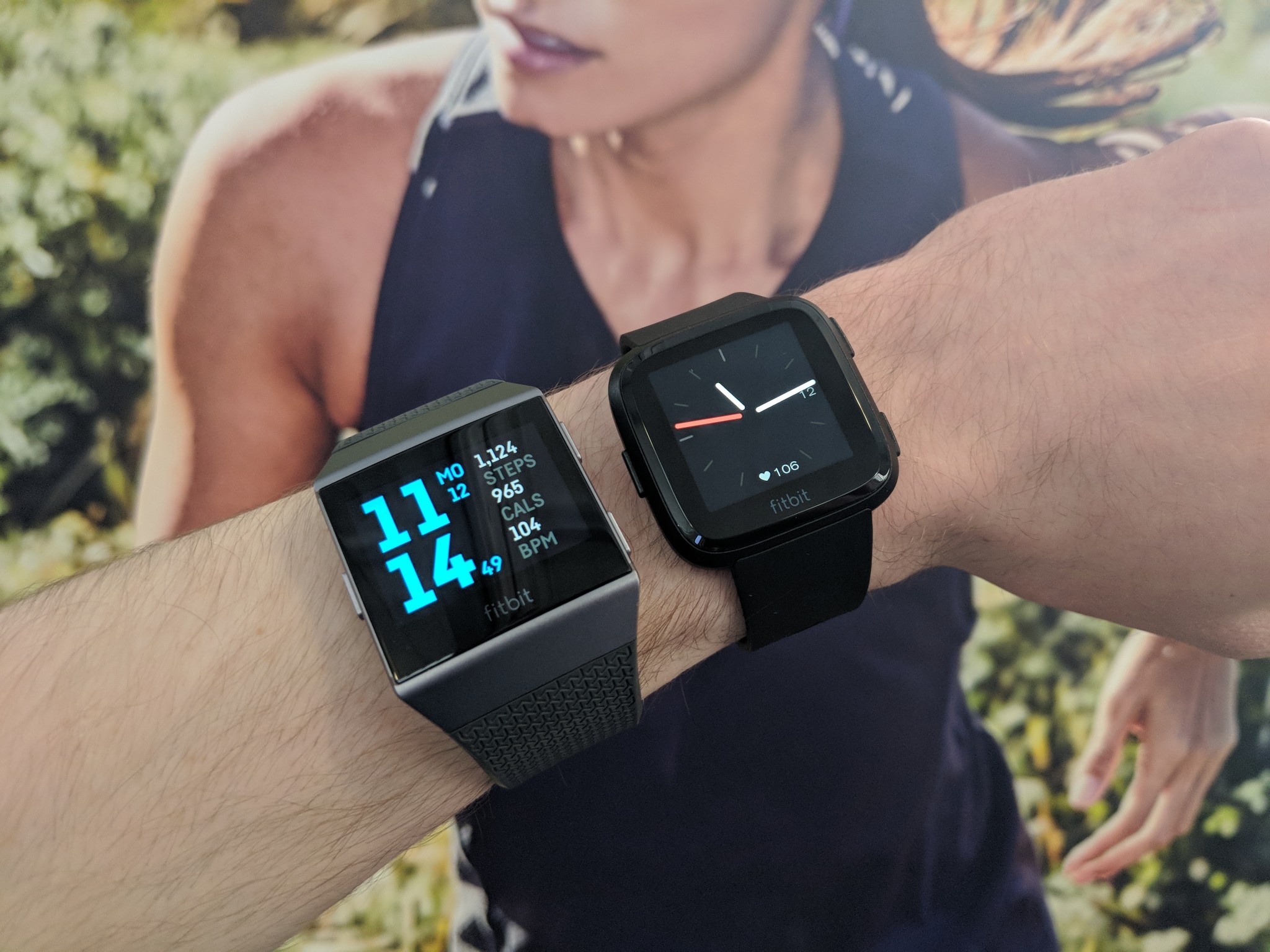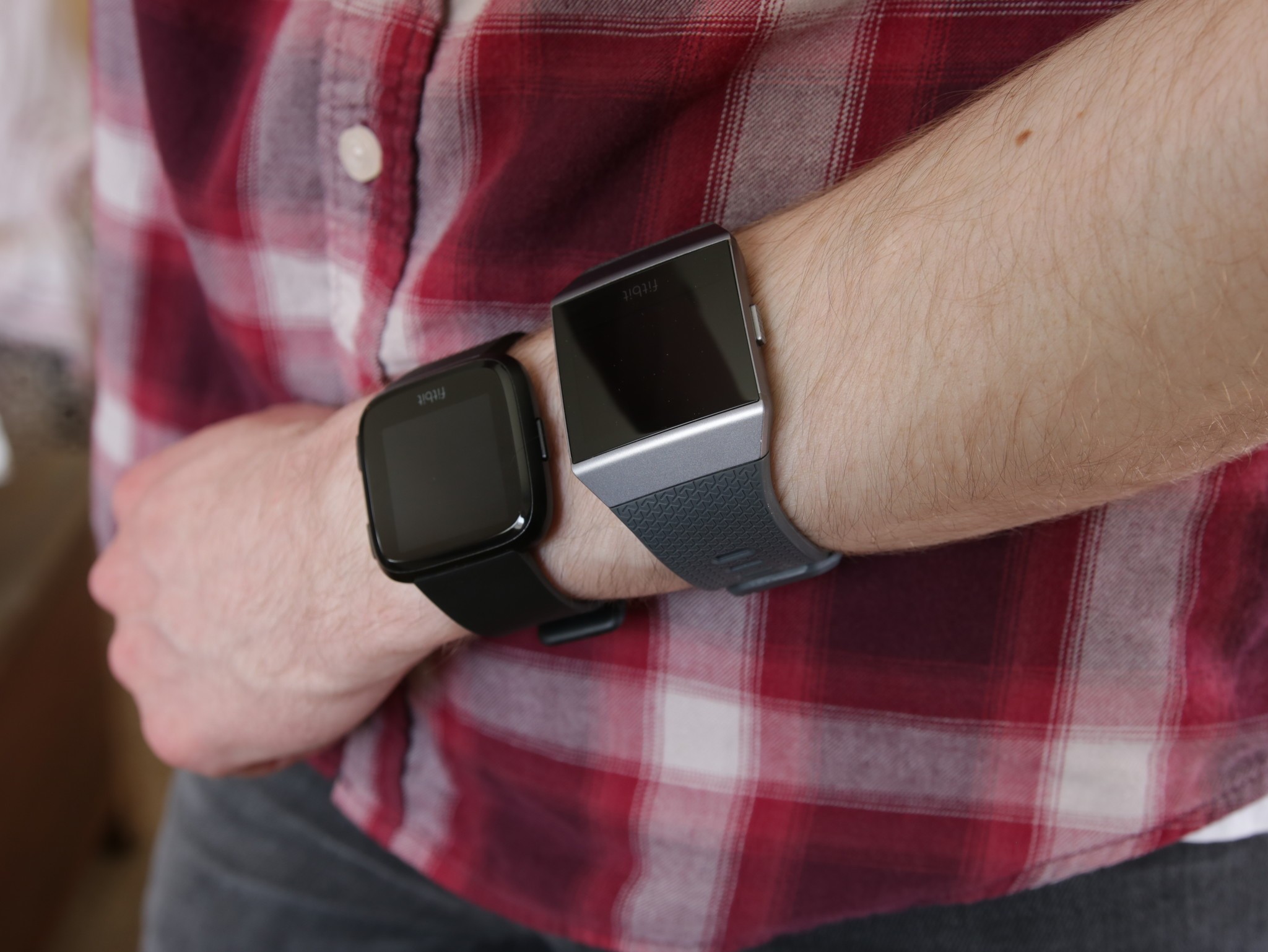Fitbit's been making fitness-trackers for over a decade, but it just started diving into the world of smartwatches over the last few months with the release of the Ionic and Versa. Both of the watches run Fitbit's custom smartwatch platform – Fitbit OS – but each is targeted at very different demographics.
The Ionic and Versa are two excellent wearables, but to ensure you buy the one that's best for you, let's take a look at each one's strengths and weaknesses.
What's different
Without a doubt, the thing that separates the Versa and Ionic the most from each other is their design.
The Versa is Fitbit's best-looking smartwatch to-date, and it draws a lot of inspiration from both the Apple Watch and Pebble Time. Fitbit chose a squircle shape for Versa's body, and this gives it a very clean and minimalistic design that looks right at home whether you're at the gym or attending a formal dinner.
Along with the good looks, the Versa is also designed to fit and be comfortable on just about anyone's wrist. Versa is incredibly comfy to wear, and it practically disappears from your mind once you put it on thanks to how lightweight it is.
The Ionic feels just as good to wear, but its design pales in comparison when placed next to the Versa. While the Versa is sleek and fashion-forward, the Ionic has a sporty aesthetic that certainly won't appeal to everyone. It can be dressed up with a leather or metal watch band to look a touch classier, but even so, the Versa has a much more appealing and flexible design.
As different as the Versa and Ionic look, both are built incredibly well.
However, while the Ionic may not be as stylish as the Versa, it is the more powerful smartwatch. One big advantage it has is built-in GPS. When you go running with the Ionic, it can map your route without having to be connected to your phone. The Versa can record a route of where you run/walk, too, but it requires a constant connection to your phone in order to do so.
The lack of built-in GPS isn't necessarily a deal-breaker for the Versa, but its presence on the Ionic does make it a watch that allows you to leave your phone behind while going for a run and still being able to record as much data as possible.
Something else the Ionic has over the Versa (at least the base model) is NFC. This allows you to make contactless payments using Fitbit Pay at stores that accept them, and while you can technically get a Versa that supports this, you'll need to spend an extra $30 for the Special Edition if you live in the U.S. and want this added functionality.
Last but not least, let's talk battery life. After wearing the Fitbit Ionic since mid-January, I've regularly gotten 4-5 days of use on a single charge. Fitbit claims the Versa is capable of similar endurance, but in my experience, I saw closer to 2 to 2 1/2 days before needing to top up. You could likely extend this to 3 days or more depending on how you use the watch, and while that's not bad, the Ionic is still the smartwatch battery champ.
What's the same
Although it may not be readily apparent at first glance, the Ionic and Versa are actually more similar than they are different. On the hardware front, both the Ionic and Versa have a heart-rate sensor that allows for 24/7 tracking and water-proofing up to 50M. You'll find three buttons on each watch (one on the right and two on the left) and both have great-looking screens that are easy to see even in direct sunlight.
GPS aside, the Versa and Ionic offer the same fitness and smartwatch features.
Another reason these two watches are so similar has to do with the operating system that powers them — Fitbit OS. The Versa ships with Fitbit OS 2.0 out of the box, and the Ionic is currently being updated to the new software as we speak.
All of your health data can be found in the Fitbit Today app, and this shows your steps, distance, calories burned, stairs, and active minutes. This is also where you can see how many hours you've been active throughout the day, what your current heart-beat is, and your three most recent workouts.
The Versa and Ionic can record a variety of different exercises, including running, walking, swimming, yoga, interval training, biking, and more, and as if that wasn't enough, you can follow on-screen workout routines using Fitbit Coach. There are three workouts loaded onto the Ionic and Versa by default, but you can access a much broader collection if you choose to pay Coach's $39.99/year premium.
Other features found on both watches include:
- Access to Fitbit's app store for apps and watch faces
- Both use proprietary bands, but the Ionic's are easier to handle
- The same user interface
- Access to Fitbit's excellent mobile app for viewing your recorded data
- Ability to store 300 songs using Pandora, Deezer, or your own music files
Which one should you buy?
You probably already have a good idea of which watch is for you at this point in the article, and that's exactly what Fitbit is hoping for.
For most people, the Fitbit Versa will be the best choice. It offers 95% of what you'll find on the Ionic, and it does so for just $199. I personally like having NFC on my smartwatches, and if you do too, the added $30 for the $229 Special Edition is more than fair considering that you also get an exclusive fabric band.
If you're a fitness enthusiast and want to go on runs/walks without carrying your phone with you, the Fitbit Ionic is the watch you'll want to pick up. The extra $100 for built-in GPS likely won't be worth it for most people, but should you choose to pay that premium, the Ionic is still an excellent device that I can easily recommend to the right group of people.
What do you think?
Now that I'm done rambling, I want to hear from you. Do you think the Versa or the Ionic is the better buy? Drop a comment down below and let me know!





0 Response to "You Can See More: Fitbit Versa vs. Fitbit Ionic: Which should you buy?"
Post a Comment